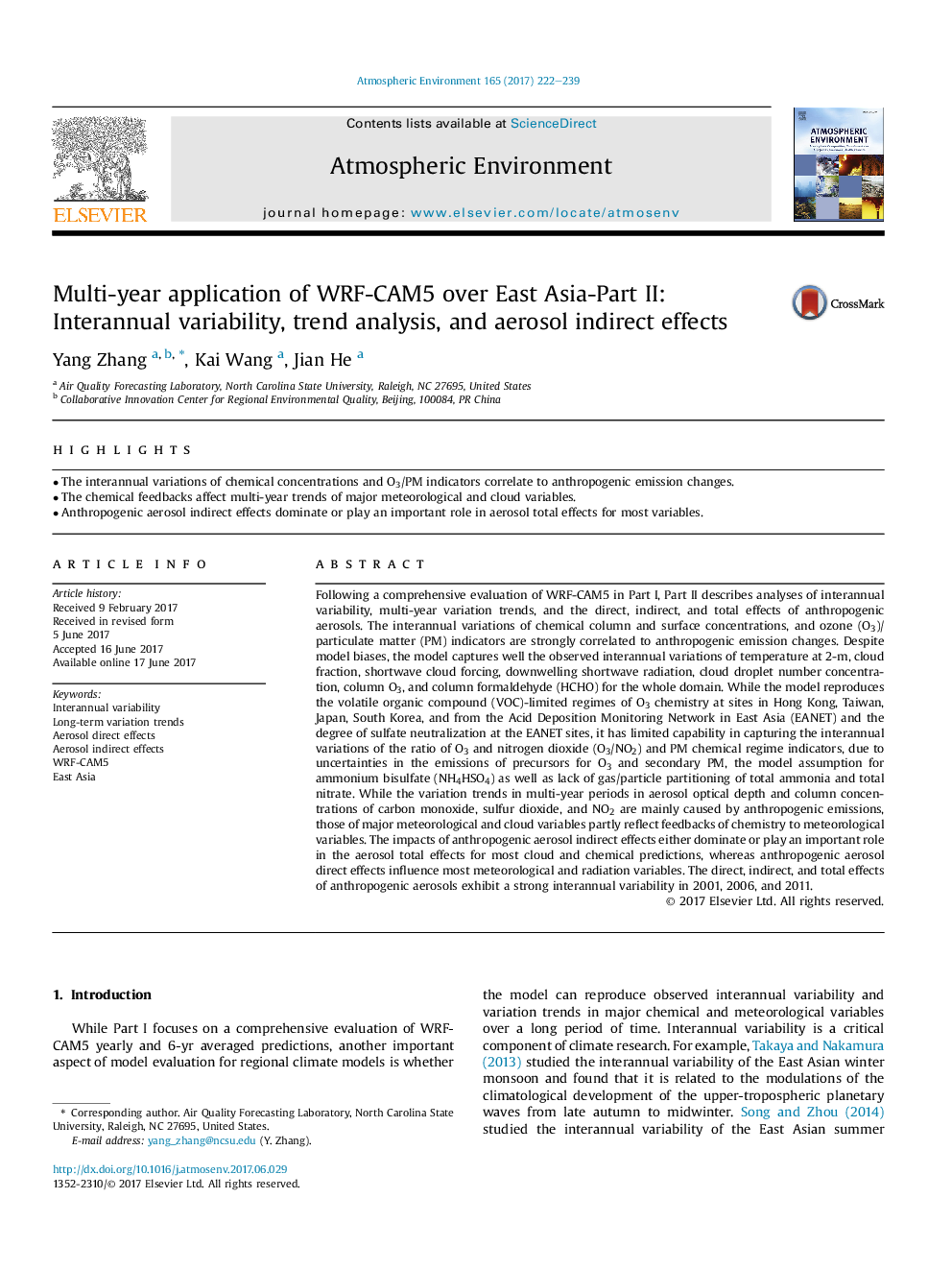| کد مقاله | کد نشریه | سال انتشار | مقاله انگلیسی | نسخه تمام متن |
|---|---|---|---|---|
| 5752922 | 1620309 | 2017 | 18 صفحه PDF | دانلود رایگان |

- The interannual variations of chemical concentrations and O3/PM indicators correlate to anthropogenic emission changes.
- The chemical feedbacks affect multi-year trends of major meteorological and cloud variables.
- Anthropogenic aerosol indirect effects dominate or play an important role in aerosol total effects for most variables.
Following a comprehensive evaluation of WRF-CAM5 in Part I, Part II describes analyses of interannual variability, multi-year variation trends, and the direct, indirect, and total effects of anthropogenic aerosols. The interannual variations of chemical column and surface concentrations, and ozone (O3)/particulate matter (PM) indicators are strongly correlated to anthropogenic emission changes. Despite model biases, the model captures well the observed interannual variations of temperature at 2-m, cloud fraction, shortwave cloud forcing, downwelling shortwave radiation, cloud droplet number concentration, column O3, and column formaldehyde (HCHO) for the whole domain. While the model reproduces the volatile organic compound (VOC)-limited regimes of O3 chemistry at sites in Hong Kong, Taiwan, Japan, South Korea, and from the Acid Deposition Monitoring Network in East Asia (EANET) and the degree of sulfate neutralization at the EANET sites, it has limited capability in capturing the interannual variations of the ratio of O3 and nitrogen dioxide (O3/NO2) and PM chemical regime indicators, due to uncertainties in the emissions of precursors for O3 and secondary PM, the model assumption for ammonium bisulfate (NH4HSO4) as well as lack of gas/particle partitioning of total ammonia and total nitrate. While the variation trends in multi-year periods in aerosol optical depth and column concentrations of carbon monoxide, sulfur dioxide, and NO2 are mainly caused by anthropogenic emissions, those of major meteorological and cloud variables partly reflect feedbacks of chemistry to meteorological variables. The impacts of anthropogenic aerosol indirect effects either dominate or play an important role in the aerosol total effects for most cloud and chemical predictions, whereas anthropogenic aerosol direct effects influence most meteorological and radiation variables. The direct, indirect, and total effects of anthropogenic aerosols exhibit a strong interannual variability in 2001, 2006, and 2011.
Journal: Atmospheric Environment - Volume 165, September 2017, Pages 222-239